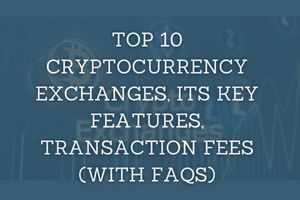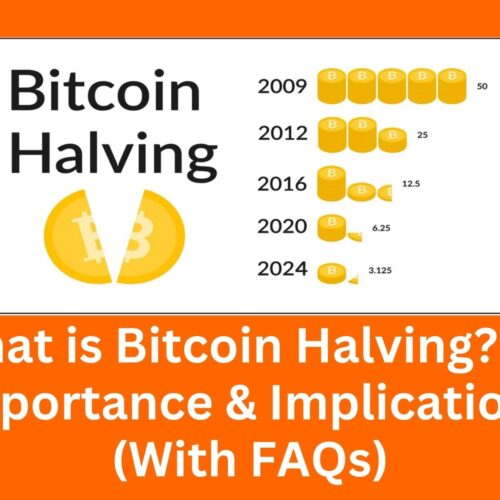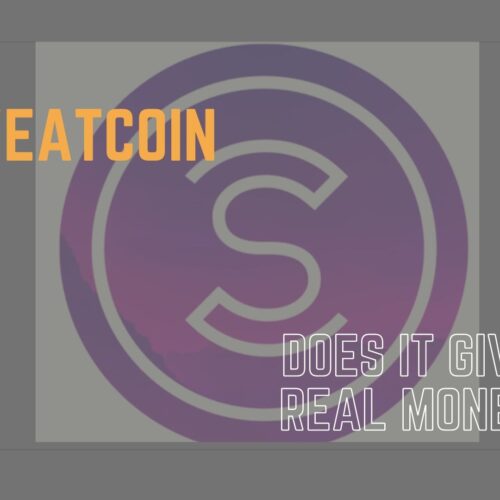The Injective Protocol (INJ) is an Ethereum-compatible, front-running tolerant, fully decentralized cross-chain protocol. It aims to not only support existing Ethereum users but also allow users of different blockchain networks to connect to a single crypto community. The interoperable backbone that powers the Injective Protocol enables cross-chain interactions between sovereign blockchains.
Either way, Defi has emerged as an oversaturated market that relies on its ability to raise more money by launching hundreds of projects in a single location without visible regulation. There are many lending protocols, decentralized exchanges, and platforms for yield farming. Every newly developed Defi project solely focuses on making it stand out from the rest. Speaking of Injective Protocol, there is a project targeting the derivatives market with a scalable and decentralized approach. With the help of big companies such as Pantera, Binance, and CMS, we can’t ignore the team talking about unlimited access to the Defi market without barriers.
Table of Contents
- What is Injective Protocol?
- The motive of Injective Protocol
- How Does Injective Protocol Work?
- Characteristics of Injective Protocol
- What Is The Injective (INJ) Token?
- Injective Protocol: Is A Good Investment?
- Way Forward for Injective Protocol
- Further Reading
What is Injective Protocol?

Founded in 2018 by Eric Chen and Albert Chong, Injective Protocol is a decentralized derivatives exchange based on Ethereum, backed by a Layer 2 solution. Injective Protocol’s system with this Layer 2 Solution Assurance allows investors to quickly and securely access the Defi marketplace. Injective Labs launched its first product in April 2020 as the first fully decentralized exchange system in Defi. The programming team’s first goal was to overcome DEX limitations at the time. This limited users to excessive delays depending on order book trading, insufficient liquidity, and other centralized designs.
When we talk about the injective protocol, we’re not just talking about a DEX that allows you to transfer tokens and increase your harvest. Instead, let’s look at DEXs that focus on the derivatives market. The Injective Protocol aims to provide Defi investors with decentralized futures, margin, spot trading, and perpetual swaps. According to Injective Labs, all components supporting DEX are designed to be censorship-resistant, public, and fully trustworthy. The injective Chain, Injective Exchange, and Injective Futures platform are the three main components of the project.
The motive of Injective Protocol
The Injective Protocol envisions restructuring an economy that is inherently decentralized. The motto behind this vision is to invent a more secure and confidential exchange, payment, and money transfer system. In this way, Injective creates a solution that helps exchange crypto, making crypto a decentralized public utility. This crypto exchange solution provided by Injective Protocol has helped provide users and their communities with the value they need in the exchange environment. Blockchain-based cross-chain forex trading, derivatives, and futures are open to anyone in the world using injection technology.
The Injective Protocol creates an exchange model with the power to transform the industry through technological innovation that aggressively advances the pace of payments and trade execution in an effective and decentralized manner without permission or censorship.
How Does Injective Protocol Work?
The INJ platform is community driven and unlocks the full potential of decentralized derivatives and borderless Defi.
It uses a verifiable delay function (VDF) to establish fair agreement on transaction ordering based on evidence of elapsed time. This addresses concerns about Ethereum’s critical competitive landscape and extractable value for miners prevents front-running attacks and resolves disputes over same-block orders.
The Injective chain was built with specific requirements not only to enable sophisticated derivatives exchanges but also as an application-specific chain for Defi. This allows the Injective Protocol to meet the needs of developers around the world. An interoperable backend allows the Defi apps built on top of it to run effectively across different blockchains like Cosmos. Compatibility with Ethereum allows developers to build new applications using tools they are already familiar with, and an interoperable backend allows the Defi app built on Injective to work across different blockchains such as Cosmos.
Many incentive mechanisms are included in the protocol layer to encourage development. For example, in Injective, relay nodes and UI hosts can earn up to 40% of all transaction fees. This is an unprecedented incentive in the crypto market.
A number of apps have been created to support the development of flexible and profitable strategies. Similar apps are expected to succeed with the Injective, encouraging developers and developers to create new apps/products that benefit the community such as A diversified hedge fund or income-generating product.
Characteristics of Injective Protocol
High Level of Confidence
An injective Chain is a permissionless public blockchain network that allows any individual or organization to participate in consensus.
Anyone participating in this public blockchain network can read and write to the network anonymously. All transactions are traceable or readable, demonstrating a high level of trust. You have full control over your trading and can even develop new derivatives markets.
Resolvable
The settlement logic can deterministically handle competing orders (aka trade conflicts) and front-running submitted in the same block.
Front-Running Resistant
Front-running is not possible with the injection protocol. In order to gain a price advantage, predatory frontrunners must not alter the order fulfillment process or intercept incoming orders.
MEV & Gas Fees Are Waived
Because Ethereum and the Injective Chain are connected via a bi-directional bridge. With its innovative two-tier design, Peggy Bridge will allow Ethereum users to seamlessly trade any asset without gas transaction fees or miner extractable value (MEV), unlike existing token bridge arrangements. You can bridge and enter the environment. This allows users to trade freely without incurring fees while alleviating network congestion.
Neutral Liquidity
The protocol allows for a fully decentralized, trustworthy, and open exchange with no restrictions on access to multiple liquidity pools.
Decentralized System
A Decentralized Autonomous Organization (DAO) monitors all new market listings and log-level updates, giving the community complete control over the network.
What Is The Injective (INJ) Token?
INJ, the Injective Protocol’s native token, functions as both a utility token and a governance token. Among other things, it is important for governance, collateralization of derivatives, security of the protocol, incentives for market makers and intermediaries, and value capture of exchange fees.
Governance:
The DAO framework allows you to use your INJ token to control many components of Injective’s sidechain, including Futures Protocols, Exchange Settings, and Protocol Upgrades.
Collateral Backing for Derivatives:
The derivatives market uses INJ as collateral, not just stablecoins. Token holders can earn interest on INJ by investing it in an insurance pool.
Market Maker Incentives:
Injective DEX charges 0.1% to makers and 0.2% to takers. Market makers who help build liquidity on DEX trading platforms receive reduced fees.
Exchange Fee:
After the relayer’s rewards have been distributed, the exchange fees are bought back on-chain and burn the event that generates the value of INJ.
Security For Tendermint PoS (Proof-of-Stake):
Tendermint-based PoS (Proof-of-Stake) consensus secures Injective Protocol. The ecosystem compensates staking nodes for network consensus participation. This method inflates the supply of INJ tokens. This starts at 7% per year and over time decreases to 2%.
Injective Protocol: Is A Good Investment?
This article has provided some key ideas related to the INJ token and its implications. This post is intended to give you a complete understanding of the project, so no financial advice is given. However, it is important to note that there are some important points that investors should consider before making an investment decision.
The project will strengthen derivatives trading. Unlike most modern DEXs, Injective can maintain order books while maintaining security and speed. Being decentralized and permissionless, Injective improves overall security and usability. With Layer 2 scaling, INJ delivers sufficient throughput to facilitate trading transactions.
Traditional CEX has problems that the injection protocol solves while retaining the innovative element. This project does not provide transaction fees. This is a big bonus for traders who use the exchange frequently. As a Layer 2 protocol, the ecosystem of projects is diverse and growing. In the fourth quarter of 2021, the project will launch its DAO. This bodes well for project development as users are migrating to DAO systems.
Way Forward for Injective Protocol
The Injective Protocol (INJ) is one of the tokens still recovering from the May 2021 crypto market crash. Having reached a peak price of $24.89 on April 30, 2021, the INJ token is currently surfing in the $12 range. According to many cryptocurrency analysts, INJ’s recovery is entirely possible due to the unique features of the INJ ecosystem, especially the decentralized platform to facilitate the Defi trading.
Conservative target for the INJ token, with current technical charts predicting around $50.
The fully Ethereum-compatible Injective Protocol (INJ) is a platform that offers the advantage of “no gas fees”, a feature that does not exist on the Ethereum blockchain. This is a major advantage and attractive point for the INJ token, as high gas prices are a common complaint among Ethereum blockchain users. This is also why, among other delayed aspects of the ETH blockchain, the ETH 2.0 update is due to address the issue of gas prices. Until then, the Injective Protocol platform can expect a surge in ETH users using its platform, which could directly impact the price of the INJ token as well.
Access to cross-chain transactions and highly decentralized markets via blockchain networks is also why the platform’s user base could grow as DeFi’s popularity grows globally. These and many other similar characteristics could cause the price of the INJ token to skyrocket in the next bull market.
At this point, many investors may choose not to invest in the INJ token, but no really smart investor here has made that mistake. As the INJ token is recovering, it will most likely hit an all-time high during the next bull market. Despite this analysis, we recommend that you do your own research before investing in this token.
Further Reading
Click on the below link to read relevant articles.
What is NEAR Protocol?



